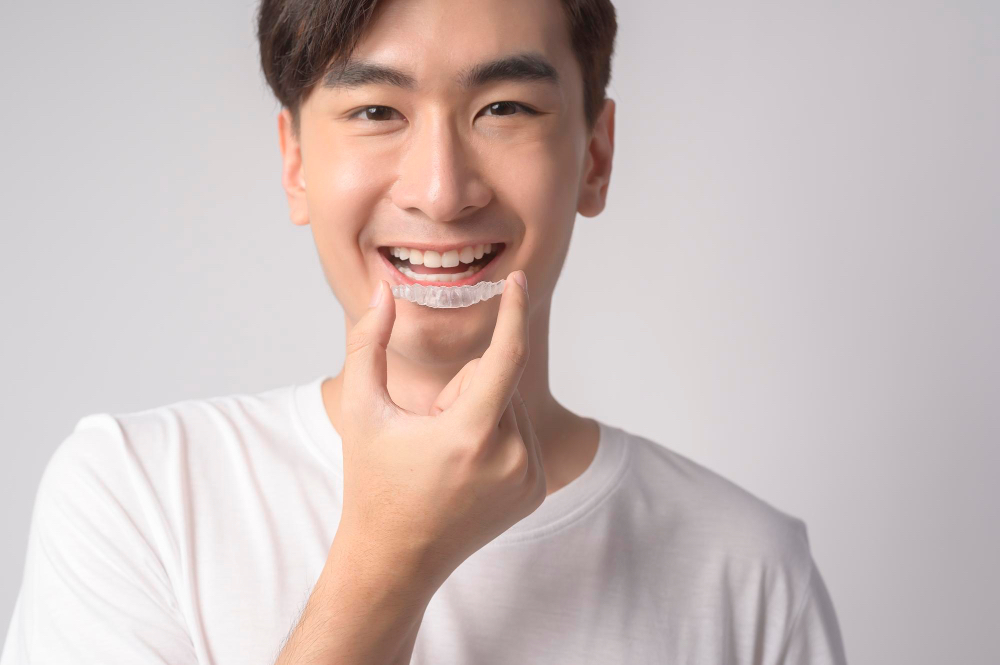If you or a loved one have misaligned teeth, you are probably dealing with what is called a dental misalignment or malocclusion. Do you think you need braces? What are the causes and consequences of this condition?
Dr. Normand Bach, orthodontist in Montreal, gives you all the details on how to better live with and treat a problem of crooked teeth. This experienced orthodontist will help you get your smile back!
Dental Malocclusion: The Causes
Misaligned teeth are caused by many factors that we must be able to recognize in order to treat them properly. Among these causes, we can mention the following:
- Tooth loss
- Genetic malformations of the jaw
- Bad proportion between the teeth and the jaw
Children who suck their thumb or push their tongue forward are more likely to have dental malocclusion problems by putting pressure on their teeth still under development. This pressure pushes the teeth forward, causing long-term misalignment of the teeth.
Moreover, if a child’s tooth is prematurely lost, the remaining teeth will move and take the space left by the loss of the tooth. This results in a malocclusion, since the permanent tooth that will grow in will not be able to develop in optimal conditions.
Happy teeth are another condition that is referred to as dental malocclusion, but this one can cause aesthetic rather than functional problems. In fact, the majority of dental malocclusion problems are aesthetic, unless they reach a more advanced stage. However, let’s have a brief look at the potential consequences of misaligned teeth.
Misaligned Teeth: The Risks
Aesthetic problems are not to be ignored: although a misaligned dentition can be functional, it can cause self-esteem problems depending on the extent of the malocclusion.
Crooked teeth can present some challenges to good oral health management. A dental malocclusion makes it more difficult to reach certain areas of the teeth when brushing over the long term. This results in the easier formation of the most common dental problems such as tartar build-up or the appearance of cavities.
Long-Term Problems of Dental Malocclusion
A dental malocclusion can also cause speech problems. The tongue relies on contact with our teeth to produce certain sounds, which can be more difficult to produce with misaligned teeth. For example, a lisp (a type of speech impediment) is often one of the consequences of misaligned teeth.
It is important to note that it can also cause functional problems, as a misaligned dentition can make chewing more difficult. Chewing strength can actually be reduced if the malocclusion is too advanced.
Crooked teeth can cause their share of long-term complications, but fortunately, treatments are available and advanced to provide you with the greatest possible comfort.

Available Treatments for Misaligned Teeth
To treat a malocclusion problem, the process is carried out with the help of a dental alignment appliance or tray. These appliances can be fixed or removable.
For children, fixed braces eliminate the need to worry about removing them, which is impossible without a qualified orthodontist.
For adults, fixed braces are just as feasible, but they do have their food constraints, as well as being visible.
Invisalign is the most popular treatment for adults because of its discreet appearance. It is a removable, invisible brace that greatly reduces the constraints of eating with braces, as well as being easy to maintain on a daily basis.
It is important to note that Invisalign braces must be worn continuously for as long as possible to ensure proper treatment of a dental misalignment.
Dr. Normand Bach, your Montreal orthodontist, performs many orthodontic procedures for children and adults. To receive a personalized treatment plan from an experienced orthodontist, schedule an appointment with our clinic today to take advantage of the services of an orthodontist with many years of experience in his field!